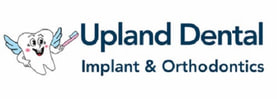- Home
-
Doctors
- William Hung, DDS: Dental Implant Specialist
- Emily Hung, DDS, MS: Orthodontist
- Amanda Budiman, DDS: Orthodontist
- Wesley Hung, DDS: Dentist
- Kelly Lee, DDS: Dentist
- Trang Do, DDS: Dentist
- Tina Sun, DDS: Periodontist
- Nischit Shah, DDS MSD: Periodontist
- Kathryn Le, DDS: Anesthesiologist
- Ian Woo, DDS, MD: Oral Surgeon
-
Our Services
- Blog
- Need a New Dentist?
- Contact
- Locations
|
What is periodontitis?
Periodontitis is a gum infection. It comes from bacteria that is growing on your teeth and gums. If the infection is not treated, permanent damage can occur to your teeth and gums. It is important to see your dentist every six months to detect periodontitis early. Once detected, it is possible to provide treatment early and with excellent oral hygiene, damage can be prevented. Gingivitis Gingivitis is the early stage of periodontitis. It is the infection and inflammation occurring in your gums. Sometimes, if you seen bleeding after flossing and brushing, that is a sign you have early gingivitis. Gingivitis comes from plaque, Plaque is a yellow whitish layer of buildup on your teeth. It is where food is left on your teeth and bacteria grows within the plaque. If plaque isn't thoroughly clean off via brushing and flossing everyday after meals, and regular cleanings with the dentist aren't scheduled, the bacteria will flourish and cause gingivitis. Periodontitis Gingivitis then proceeds to early periodontitis. In this stage, gums start to recede, and small gaps between the teeth that look like triangular spaces start to form. As the gum recedes, it also pulls away from the tooth and form pockets. The pockets are also spaces were bacteria can thrive. The bacteria is a source of constant infection and as your body battles the infection, generalized inflammation develops and persists. This persistent inflammation leads to more loss of gum tissue and eventually the bone that holds teeth in disappears as well. When your dentist discusses bone loss, this is the area that they are talking about. Without enough bone to hold the teeth in, this is how some people can lose their teeth. If the periodontal disease becomes advanced, the person could have pain when they eat, not to mention bad breath and constant bad taste. Continued infection can also affect your health as it leads to full body inflammation. How do you know if you have periodontitis? You know you have periodontitis if you:
How Do You Get Periodontitis? The plaque and calculus that develop on your teeth everyday harbors the bacteria that causes periodontitis. If that plaque and calculus isn't thoroughly cleaned off everyday with brushing and flossing and dental cleanings aren't scheduled on a regular basis, that bacteria will create gum disease. Maintaining a clean mouth on a daily basis will prevent gum disease aka periodontitis. Higher Risk Groups Some people tend to be at risk of developing periodontitis as well. People that:
Dental Visits Seeing your dentist regularly is important to treat periodontal disease and to also make sure that it doesn't get worse. Dentists keep track of your periodontal status by checking the pocket depths in your gums with a probe. The dentist will also be able to check for and remove any calculus that is growing under the gumline. If needed, they may also refer to a gum specialist, known as a periodontist, for evaluation and any treatment. Effects of Long Term Periodontitis
Treatment After being diagnosed with periodontitis, first step is to have your dentist remove the plaque and bacteria. A deep cleaning that involves scaling and root planing will clean off the calculus and remove the bacteria. An antibiotic treatment may be recommended as well to curb bacteria growth. Evaluation appointment may be scheduled as needed to monitor the improvement. The next step is to practice excellent oral hygiene at home to prevent bacterial regrowth. Brushing after every meal, to keep teeth clean and plaque free throughout the day. Investment in an electric toothbrush may help with the hard to reach areas. Flossing throughout at bedtime is necessary to ensure that the teeth are clean during that period you are sleeping. Plan regular visits to the dentist at least every six months and not smoking or using chew tobacco will ensure healthy gums. As long as if periodontitis is caught early on, regular appointments with the dentist are kept and excellent hygiene habits are kept up at home, gum treatment can have great success. Good maintenance and having regular dental visits will keep periodontitis at bay.
2 Comments
4/20/2021 11:57:20 am
Such an amazing blog, I love reading all your blogs. They are super amazing and informative at the same time. Bookmarked your page already, keep posting more.
Reply
12/14/2021 10:38:58 pm
Thanks for sharing such great information! Gum disease is a problem that affects people from all walks of life. It is a serious health issue that can lead to tooth loss, heart disease, and many other problems. This article will explore the causes and prevention methods for gum disease.
Reply
Leave a Reply. |
Archives
August 2021
Categories
All
|
|
Upland Dental Implant and Orthodontics
LocationsUpland - 1268 W. Foothill Blvd Upland, CA 91786 (909) 981-4111
Rancho Cucamonga - 11328 Kenyon Way Rancho Cucamonga, CA 91701 (909) 945-5800 Chino - 14335 Pipeline Ave #A Chino, CA 91710 (909) 902-0800 Wildomar - 34859 Frederick St Suite 106 WIldomar, CA 92595 (951) 678-9888 |
Services
|
© 2022 Upland Dental Implant & Orthodontics
- Home
-
Doctors
- William Hung, DDS: Dental Implant Specialist
- Emily Hung, DDS, MS: Orthodontist
- Amanda Budiman, DDS: Orthodontist
- Wesley Hung, DDS: Dentist
- Kelly Lee, DDS: Dentist
- Trang Do, DDS: Dentist
- Tina Sun, DDS: Periodontist
- Nischit Shah, DDS MSD: Periodontist
- Kathryn Le, DDS: Anesthesiologist
- Ian Woo, DDS, MD: Oral Surgeon
-
Our Services
- Blog
- Need a New Dentist?
- Contact
- Locations

 RSS Feed
RSS Feed